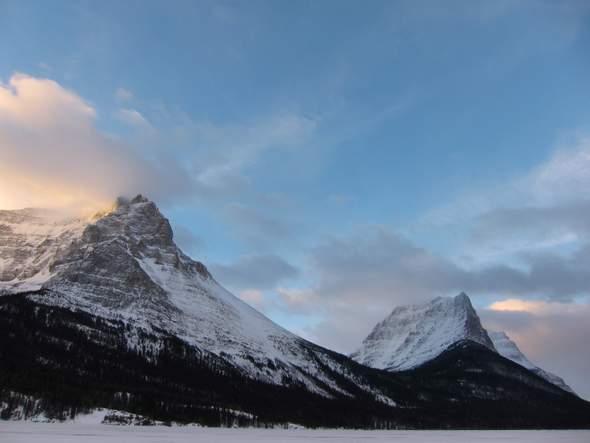
Sandstone Amphitheatres
Backpacking only makes sense because there are lines drawn around it; places we cannot go. Most definitions exclude civilized, excessively roaded areas, so we backpackers are forced back into the woods, our preferred routes thus constrained. Less often discussed, but just as relevant, are the rugged places in the hearts of wilderness where backpackers are turned back. These areas, whose bare outline we see on maps but not with our own eyes, are just as significant in shaping where and how we hike.

There are few purer examples of such natural boundaries than the sandstone amphitheatres of the Colorado Plateau. After hours, if not days of hiking up a main canyon the twists become ever tighter and more sinuous, suggesting something important is close. After it is suggested, but before it might be expected, the end comes when the sandy bottom and good walking end in a broad alcove, the inside of a bell, flat-bottomed, thin green plants hanging from the walls, and a shallow clear pool skimming the center of the bottom. The watercourse which hollowed this bowl does not end, but continues out of sight via a twisted slit in the upper wall. Sight can reveal little of what lies further, and feet are of no more use.

It took a while, but eventually I found out how to see every foot of these transmogrific washes. Ropes, harnesses, downclimbing gymnastics, and cleverness can see one through. The technical processes can be satisfying, but my favorite part of canyoneering is seeing a canyon grow from a crease in the mud into a multi-layered giant which cannot be seen in even half a hundred glances, without having to miss any of it. These routes often deliver surpassing isolation: most dedicated technical canyon hikers lack the attention span and ultralight know-how for multi-day technical routes, and most backpackers have packs too heavy to consider adding ropes and hardwear.
Isolation can also be had in what is normally civilized, unbackpackable places. All it takes is snow. For all humanities engineering feats, for all the plows to move it, skis to go over it, and for all our dependence on it for water, snow remains the greatest single impediment to our most mundane convivence. Nothing else grounds us so thoroughly to a halt, and nothing so reliably keeps out the backpacker, regardless of context.

The east side of the Going-to-the-Sun road in Glacier National Park is my favorite places to enjoy the isolation of the snows. In August the skinny two-lane road, pasted against the north shore of St. Mary Lake, is full of cars. Coyotes, deer, and pedestrians fear to tread there, for good reason. Beginning sometime in November, the road is given back to the snows, and to the wind. Weather blazes east off the continental divide, often at 70 miles per hour, down along the lake. I've skied in on six inches of snow, and returned 36 hours later to find nothing left on the pavement but a casing of verglas and the skeleton of my tracks.

The best of summer backpacking takes us to the most remote places, those who distance and time place furthest from roads. In winter, the rules change, but the sensation of isolation remains as frightening and important as ever. Walking into a world categorically apart from civilization is a precious thing. Doing so in a place where in summer the impatience of traffic jams seeth is another thing entirely.
This post was written by former Trail Ambassador Dave Chenault.
